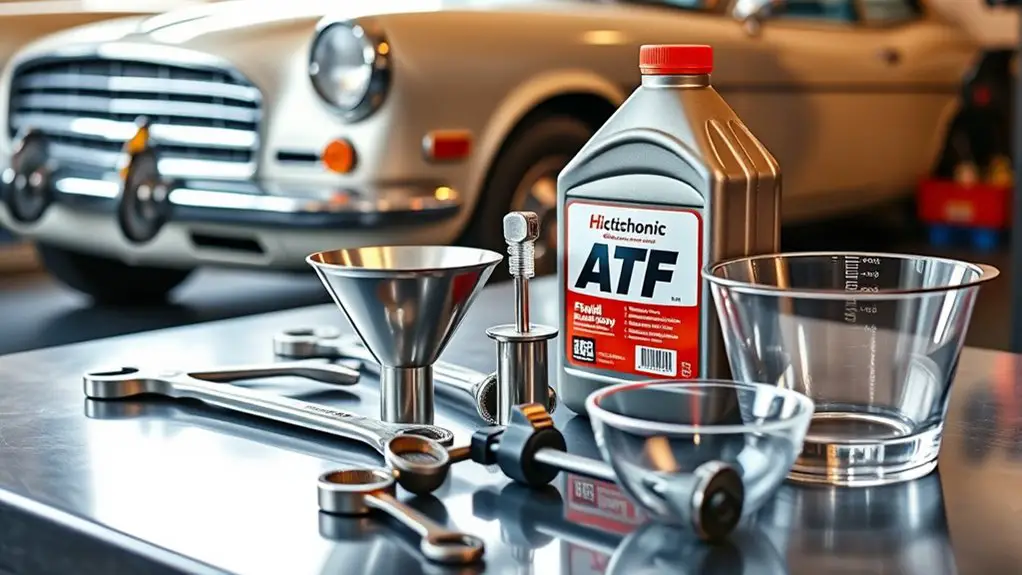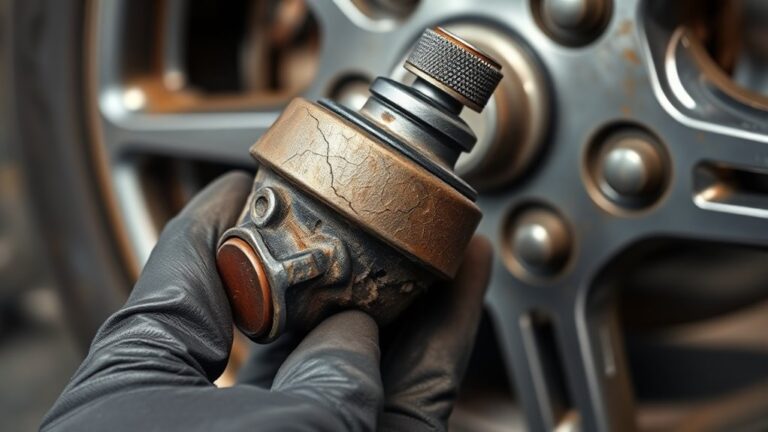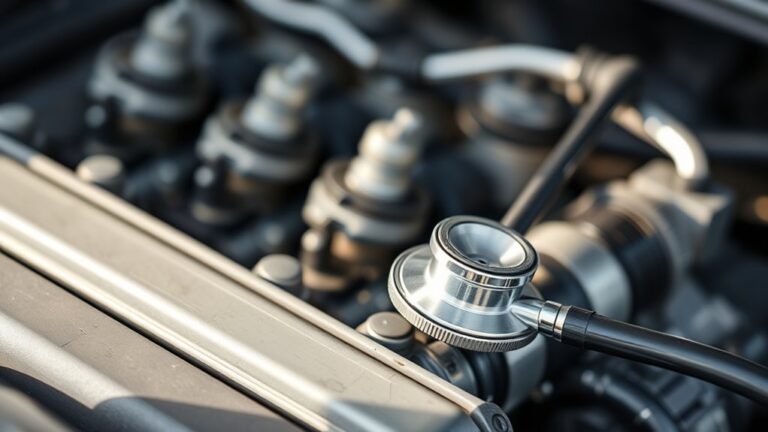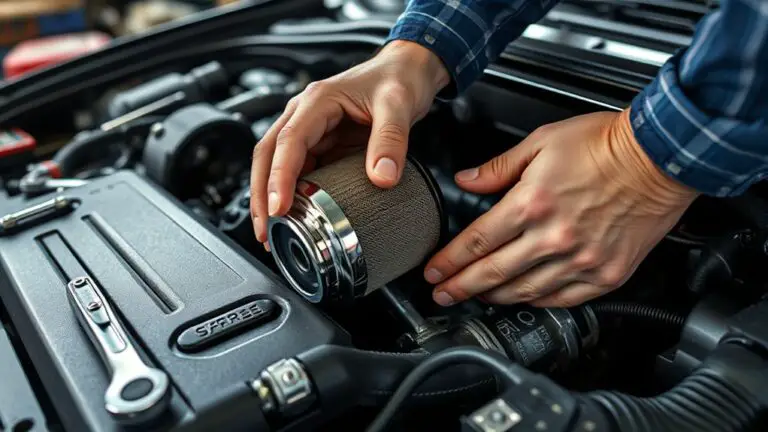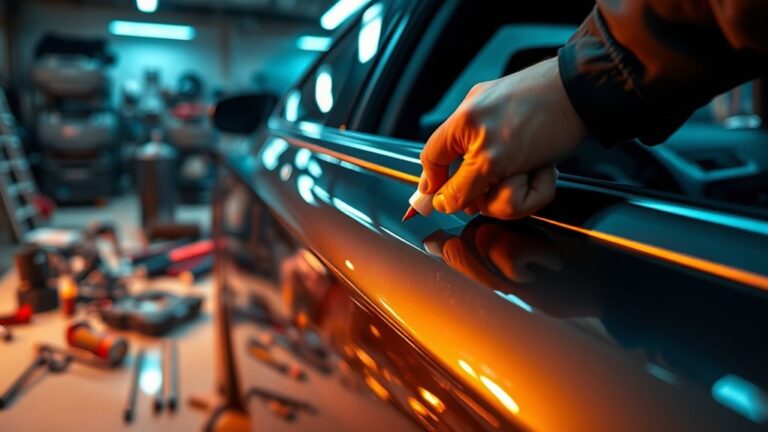Tools You Need to Service ATF at Home
To service ATF at home safely, gather purpose-built tools and follow strict handling procedures. You’ll need a calibrated fluid level gauge or sight tube to verify volumes, a magnetized dipstick, and a torque wrench to confirm fastener tension. Use borescope for internal inspection and a high-quality flashlight to spot contamination. Keep PPE on, store fluids separately in labeled vessels, and dispose of waste per local regulations. If you keep going, you’ll reveal more essential steps and safeguards.
Essential Inspection Tools for ATF Servicing
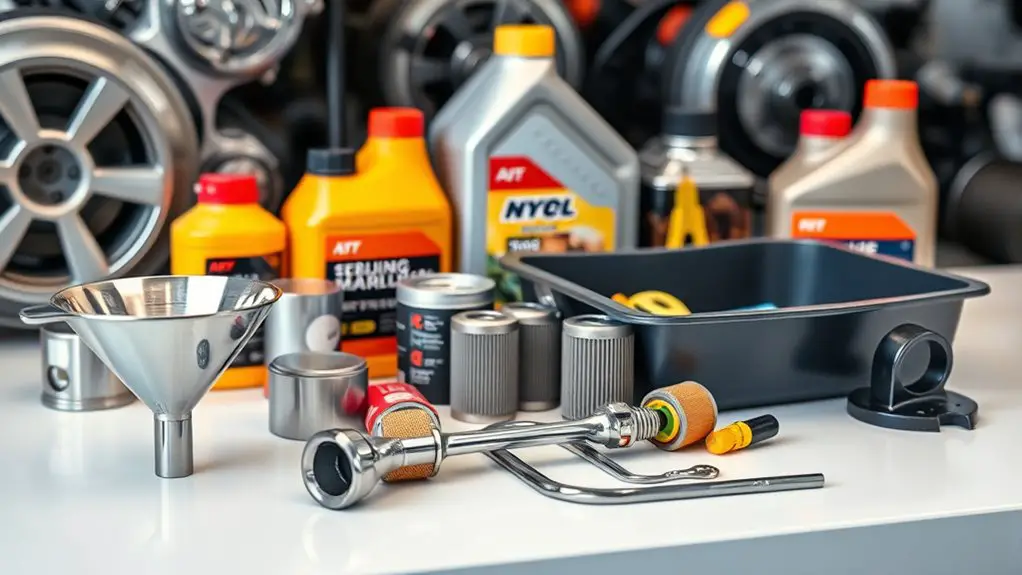
Investing in the right inspection tools is essential for safe, effective ATF servicing. You’ll start with a calibrated fluid level gauge to verify correct ATF volumes in each reservoir. Use a magnetized dipstick or transparent sight tube where applicable to confirm consistent readings, and keep a clean, dry cloth handy to wipe residue without contaminating the system. A high-quality flashlight or LED penlight helps you spot color changes, contamination, or particulate buildup that could indicate wear or leaks. Employ a borescope for internal inspection if access is limited, focusing on seals, fittings, and valve ports. Don’t skip a calibrated torque wrench; correct fastener tension prevents leaks and component damage. For leak detection, incorporate a UV dye tester or infrared thermometer to pinpoint unusual heat patterns near connections. Maintain a dedicated inspection tray and labeled containers for recovered fluids, safeguarding cleanliness and safety during every step.
Safe Handling and Storage Equipment
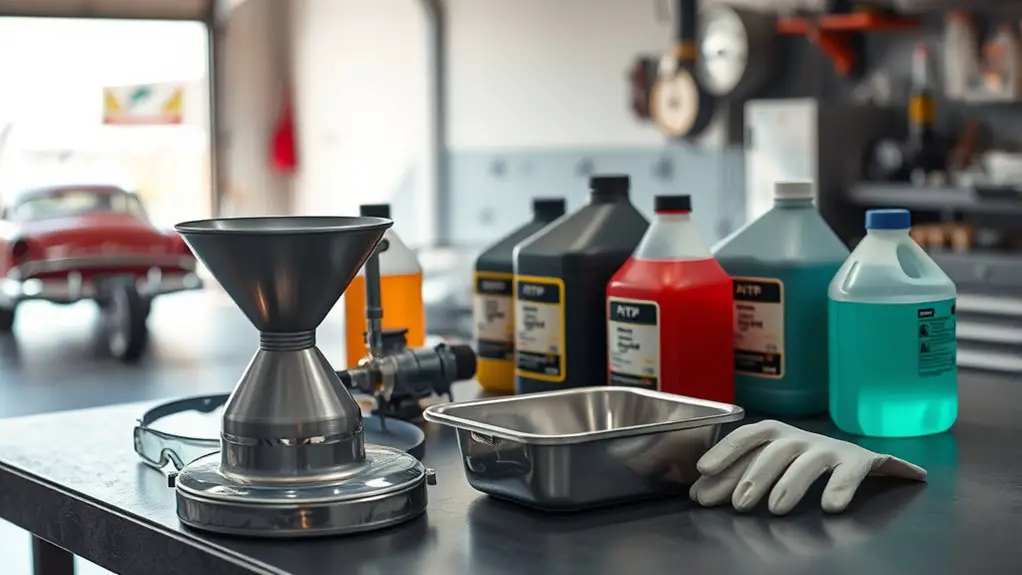
Safe handling and storage of ATF and related tools is about preventing contamination, spills, and exposure. You must designate a dedicated work area with clear boundaries and access control. Use labeled storage containers that are compatible with ATF and sealable to limit vapor release. Never mix fluids or solvents in shared containers; keep separate, clearly marked vessels for each substance. Implement handling procedures that minimize splashes, drips, and skin contact, including gloves, eye protection, and disposable absorbents at the ready. Store damaged or questionable containers in secondary containment to prevent leaks from reaching the environment. When transporting components, use a rigid carrier and secure them to prevent shifting. Maintain inventory logs with dates and batch numbers to track exposure risks and facilitate recalls if needed. Regularly inspect seals, lids, and labeling; replace compromised hardware promptly. Finally, practice tidy, deliberate disposal of waste according to local regulations to uphold safety and freedom.
Cleaning, Solvent, and Disposal Supplies

Cleaning, solvent, and disposal supplies must be chosen and managed with meticulous care to prevent exposure and environmental harm. You’ll select materials that minimize risk while supporting effective ATF maintenance. Start with cleaning methods that pair well with ATF residues—non-abrasive brushes, lint-free cloths, and optional microfiber pads. For solvent types, choose products labeled for automotive fluids and verify compatibility with seals, gaskets, and metals you encounter. Use dedicated, non-reactive containers to prevent cross-contamination. Always read manufacturer instructions for proper dilution, contact time, and disposal guidance. Keep absorbents, disposable wipes, and paper towels in a sealed bin to reduce vapor release and leakage. Store solvents in ventilated areas away from heat sources, and label all containers clearly. When disposing, follow local regulations for hazardous waste; never pour used solvents down drains. Maintain a clean workstation, wipe surfaces before and after tasks, and document disposal dates to guarantee ongoing safety and environmental stewardship.
Diagnostic Gauges and Measurement Tools
Diagnostic gauges and measurement tools are essential for accurate ATF servicing and safe operation; use calibrated instruments and verify readings against known standards before each task. You’ll rely on diagnostic techniques to assess fluid quality, temperature, pressure, and flow patterns with clear thresholds. Keep a dedicated set of gauges for ATF work, labeled and stored away from contaminants. Always zero or tare instruments before taking measurements, and note ambient conditions that could skew results. Gauge calibration is non-negotiable: schedule periodic checks against certified references and record deviations. When reading pressure, confirm seals are intact and connections are tight; for temperature, allow stabilization and reference the tool’s response time. Document every measurement, including units and tolerance ranges, to guide rechecks and adjustments. Use redundant checks for critical steps, cross-verifying with second instruments when possible. Your disciplined approach minimizes errors and protects the system’s longevity and safety.
Safety Gear and Personal Protective Equipment
Personal protective equipment is essential for every ATF service task, and you should donned appropriate gear before you start and keep it on throughout the procedure. You’ll follow safety protocols to minimize exposure and protect your hands, eyes, and skin, while maintaining personal hygiene before, during, and after work.
Personal protective gear is essential for every ATF service task; don and keep it on to protect hands, eyes, and skin.
- Gloves, chemical-resistant, snug fit
- Safety goggles or face shield, splash protection
- Flame-resistant coveralls or apron, full body coverage
- Respirator or dust mask, proper fit and cartridge type
Keep gear clean and inspected; replace damaged items immediately. Enforce a strict hygiene routine—wash hands before donning and after doffing, don’t touch your face, and store PPE in a labeled, dedicated area. When you work, avoid loose clothing and jewelry that could snag or trap ATF fluids. Dispose of contaminated materials according to local regulations, and document usage as part of your maintenance log. Adhering to safety protocols and personal hygiene guarantees precise, safe service and preserves your freedom to work confidently.
Frequently Asked Questions
How Often Should You Recalibrate Your ATF Service Gauges?
The gauge accuracy should be checked every 6 months. You’ll want to verify against a known reference and log the result to track drift over time. If you notice fluctuations, recalibrate promptly and re-test. Maintain strict service intervals and avoid guessing. This keeps your ATF system safe and compliant. You’re aiming for reliable readings, so stay methodical, document everything, and don’t skip scheduled calibrations—precision protects you and your equipment.
What Are Signs of Contaminated ATF From Storage?
Contaminated ATF from storage can show unusual viscosity, dark color, foul odor, debris, or sediment. If you notice separated layers or cloudiness, assume contamination and don’t reuse. Maintain strict storage conditions: keep containers sealed, protected from heat, moisture, and direct sunlight; label dates; rotate stock; discard outdated fluid per local guidelines. You should test or replace compromised fluid before use, and always follow safety protocols to protect you and your equipment.
Can Residential Water Filters Substitute for Proper Solvent Filtration?
“Where there’s a will, there’s a way.” No, residential water filters cannot substitute proper solvent filtration for ATF. You should not rely on water filter effectiveness for solvent purification. Use purpose-built solvent filtration alternatives and follow manufacturer safety guidelines. Improper filtration risks contamination and injury. If you want freedom, choose correct equipment, cap the system properly, and dispose of waste responsibly. Prioritize safety, accuracy, and compliance over convenience.
Are There Legal Disposal Options for Used ATF Parts?
Yes, there are legal disposal options for used ATF parts. You should follow local hazardous waste guidelines and take damaged or contaminated components to an approved facility. Bring details about any solvents or cleaners used, as these affect disposal. Look for certified recycling options and hazardous waste programs in your area. This keeps you compliant and safer, ensuring proper handling, labeling, and documentation throughout the process.
What Maintenance Schedule Exists for Non-Metal ATF Components?
Non-metal components require careful attention; the maintenance frequency depends on usage, but you should inspect for wear every 5,000 miles or 6 months, whichever comes first. Prioritize cleanliness, check seals, and monitor for leaks, ensuring non metal durability stays intact. Replace worn parts promptly and avoid aggressive fluids. Follow manufacturer guidelines, use proper lubricants, and document inspections. This approach keeps you safer, more confident, and aligned with a responsible maintenance routine.

